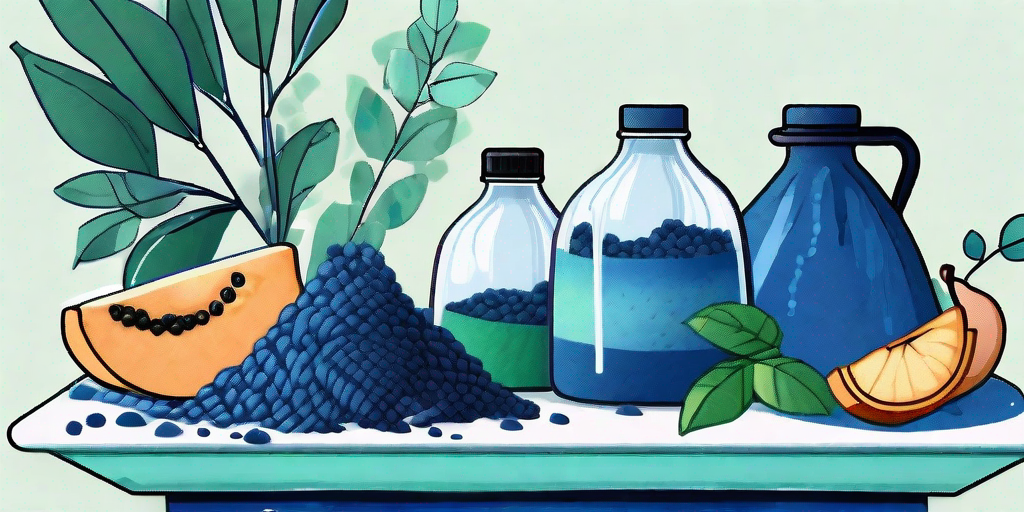
Indigo, a color that has held a mystical allure for centuries, is more than just a shade on the color wheel. It's a journey into the world of natural dyeing, a process that has been used for thousands of years to add vibrancy and depth to textiles. This article will take you on a colorful journey, uncovering the mysteries of indigo and exploring the fascinating world of natural dyeing.
The History of Indigo
Before we dive into the deep blue sea of indigo, let's take a moment to appreciate its rich history. The use of indigo as a dye can be traced back to ancient times, with evidence of its use found in civilizations across the globe, from the ancient Egyptians to the Mayans.
Indigo was a highly prized commodity, often referred to as 'blue gold'. It was so valuable, in fact, that it was used as a form of currency in some cultures. Now, that's what we call a color with some serious clout!
The Indigo Trade
Indigo's popularity led to the establishment of the indigo trade. This was no small-scale operation. We're talking about a global network of traders, merchants, and dye masters, all working together to feed the world's insatiable appetite for this mesmerizing blue dye.
However, the indigo trade was not without its controversies. The labor-intensive process of producing indigo dye often relied on slave labor, casting a dark shadow over the industry. It's a sobering reminder that even the most beautiful things can have a dark side.
The Science of Indigo
Now, let's put on our lab coats and delve into the science of indigo. What gives indigo its distinctive blue hue? The answer lies in its chemical structure.
Indigo dye is derived from the indigo plant, specifically the leaves. These leaves contain a compound called indican, which when exposed to oxygen and fermented, transforms into indigotin - the compound responsible for indigo's characteristic blue color.
The Fermentation Process
The process of extracting indigo dye is a fascinating blend of art and science. It involves fermenting the indigo leaves in water to release the indican, then adding an alkaline substance to raise the pH. This triggers a chemical reaction that transforms the indican into indigotin.
But the magic doesn't stop there. The indigotin is then precipitated out of the solution, dried, and ground into a powder, ready to be used as a dye. It's a labor of love, but the end result is worth it. That deep, rich blue color is enough to make anyone swoon.
How to Dye with Indigo
Feeling inspired to try your hand at indigo dyeing? Here's a simple step-by-step guide to get you started. Remember, indigo dyeing is as much an art as it is a science, so don't be afraid to experiment and make it your own.
- Gather your materials. You'll need an indigo dye kit, a large bucket, and the item you want to dye.
- Prepare your dye vat according to the instructions in your indigo dye kit.
- Submerge your item in the dye vat, making sure it's fully saturated.
- Let your item soak in the dye vat for about 15 minutes.
- Remove your item from the dye vat and let it oxidize. As it's exposed to the air, it will transform from a green color to the distinctive indigo blue.
- Repeat the dyeing and oxidizing process until you achieve your desired color.
And voila! You've just dyed your first item with indigo. Give yourself a pat on the back, you're officially an indigo dye master!
FAQs
Is indigo dye safe?
Yes, indigo dye is generally safe to use. However, it's always a good idea to wear gloves and old clothes when dyeing, as indigo can stain. Also, make sure to work in a well-ventilated area.
Can I dye any type of fabric with indigo?
Indigo dye works best on natural fibers like cotton, linen, and silk. Synthetic fibers may not absorb the dye as well.
How do I care for indigo dyed items?
Indigo dyed items should be washed separately in cold water, as the dye can bleed. Over time, the color may fade, but that's part of the charm of indigo. It's a color that lives and breathes with you.
Conclusion
Indigo, with its rich history and mesmerizing hue, is truly a color like no other. Whether you're a history buff, a science geek, or a DIY enthusiast, there's something about indigo that captivates and enchants.
So why not embark on your own colorful journey into the world of natural dyeing? Who knows, you might just find that indigo is your new favorite color. After all, as the saying goes, "once you go indigo, you never go back!"















